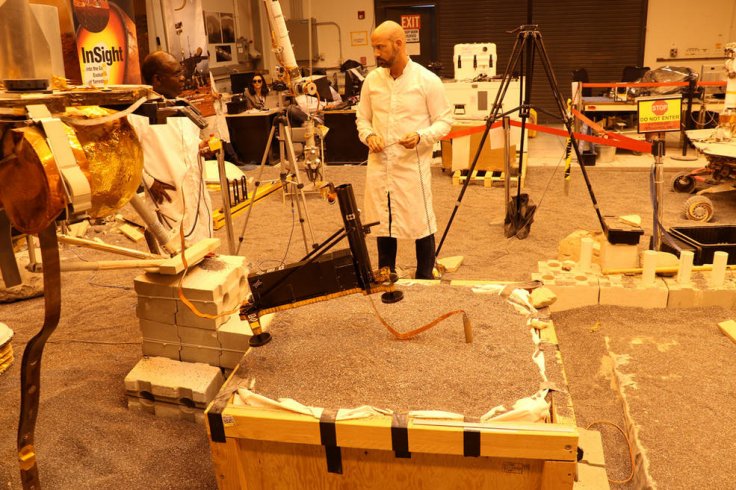
NASA engineers have full work on hands to make Mars rover InSight's heat probe, known as the "mole," digging again on Mars.
Insight's Heat Flow and Physical Properties Package (HP3) have been designed to dig as deep as 16 feet (5 meters) but the rover's arm failed to dig deeper than about 12 inches (30 centimeters) below the Martian surface since Feb. 28, 2019.
Since the lander's cameras are blocked from viewing the mole, the team is planning to use InSight's robotic arm to lift the structure to see and help the mole dig further. HP3 is an experiment designed to look at the deep interior of the Red Planet.
InSight has a seismometer that recently recorded its first marsquake on April 6, 2019, followed by its largest seismic signal to date on May 22 with a magnitude 3.0.
NASA's Jet Propulsion Laboratory in Pasadena, California, which leads the InSight mission, and the German Aerospace Center (DLR), which provided HP3, are still clueless on what is preventing the mole from digging deeper on Mars surface.
NASA team believes it could be due to an unexpected lack of friction in the soil as the mole is designed in such a way that loose soil flows around it, adding friction that works against its recoil, allowing it to dig. Without enough friction, it will bounce in place.
"Engineers at JPL and DLR have been working hard to assess the problem," said Lori Glaze, director of NASA's Planetary Science Division. "Moving the support structure will help them gather more information and try at least one possible solution."
The lifting sequence will begin in late June. In a week's time, the arm will lift the structure in three steps, taking images and returning them so that engineers can make sure the mole isn't being pulled out of the ground while the structure is moved. If removed from the soil, the mole can't go back in.










